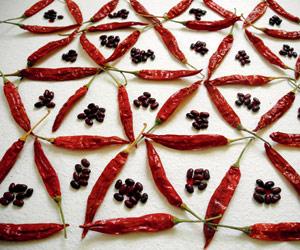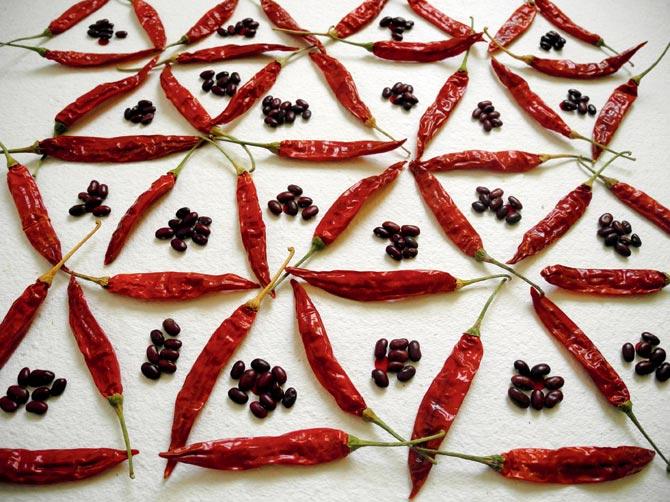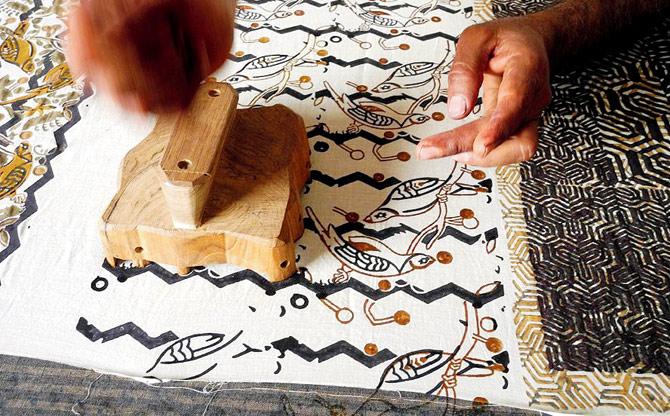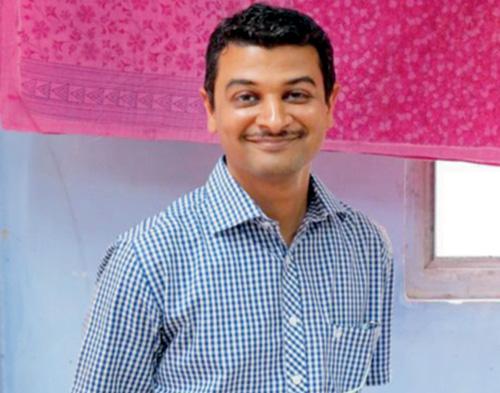On a table, textile designer Sanjay Garg's signature monkey motifs smile at you from a red-and-white cotton handkerchief. Beside these are Parakeet Pyjamas by UK-based fashion illustrator Charlotte Linton

On a table, textile designer Sanjay Garg's signature monkey motifs smile at you from a red-and-white cotton handkerchief. Beside these are Parakeet Pyjamas by UK-based fashion illustrator Charlotte Linton. Another corner exhibits ajrakh-style scarves by design director Emlyn Firth in collaboration with block printer Soyab Khatri along-side Glasgow-based designer Gabriella Marcella's garments with motifs of dancing ladies. The exhibits have a common inspiration — the Turkey Red, a madder root dye laboriously fixed on a cloth to turn it a luminous red. The process is said to have originated in the Levant region. These, among other creations, are part of India Street Bazaar, a project conceived in 2015, which brings together seven designers from Scotland and India, and travels to ARTISANS' this weekend.

Created quilt design patterns using items like chillies and red beans from his mother's kitchen
ADVERTISEMENT
Trace the history
The project derives its name from India Street in Scotland, a derelict factory site that was home to the global Turkey Red textile industry in the 19th century, with India as its main market. However, the industry rapidly declined due to several reasons, including Gandhi's Swadeshi movement, and the last Turkey Red factory shut its gates in 1960. "This teaches us lessons about good design and sustainable business practice. Although no longer in production, Turkey Red had strong connections to Indian craft. It copied bandhani, Telia rumal weave and ajrakh in its industrial roller designs," says exhibition curator Katy West.

Charlotte Linton's parakeet design
The designs that she refers to feature in copies of the Bombay Sample Book, used by the factories as samples suitable for the Indian market, including zigzag and polka dot patterns, and illustrations depicting peacocks, wild animals and domestic life. The designers were invited to flip through the Bombay Sample Book, 1867, housed in the Turkey Red archives at the National Museum Scotland, for this project.

Laura Spring checks out the block-printed zigzag patterns
Tackle the blocks
The team also spent two weeks in Ahmedabad and Kutch for a residency with block printers. "It was exciting to bring the Scottish designers to India. Block printing was a new process for them," says West. "I'm used to working with bold and colourful flat shapes to create designs, but I realised that block printing created a different aesthetic. It wasn't as sharp," says Laura Spring, a celebrated UK-based textile designer, who has created cushion covers inspired by leheriya, a traditional tie-and-dye technique from Jaipur, often seen in turbans. "I was inspired by the amount of intricate detail you can produce with a block, so I tried a version of the design with much smaller zigzag patterns."

Lokesh Ghai
Meanwhile, Lokesh Ghai, textile artist and associated curator of the project, borrowed items like dried chillies and red beans from his motherâÂu00c2u0080Âu00c2u0088Asha's kitchen to create interesting design patterns for dohars (quilts) that she stitched. He says, "Initially, the block printers found it hard to print the 'bean' motif since the markings had to be made with the judgment of the eye, while they were used to working with specified measurements. So, I had to print and show them that there is no right or wrong in the creative expression."

Sanjay Garg
The Mumbai chapter
The gallery's founder Radhi Parekh has invited six more designers to create theme-based works. These include Abhinav Dhoundiyal of Peoli, who will exhibit a collection of knitted garments inspired by his encounters with a madder variety from Nagaland, and Fahd Khatri, who has crafted madder red tie-dyed bandhani scarves. Parekh says, "On the one hand, we've seen a great demand for natural dyes but many karigars have abandoned the natural madder and switched to the easier-to-use chemical Alizarin to hasten to process. The traditional dyeing recipes are also forgotten. So, now, when they work in madder, the results are often blotchy. I hope this exhibition helps revive Indian madder."
FROM: November 4 (preview: 6.30 pm to 8.30 pm) to November 12
TIME: 11 am to 7 pm
AT: Dr VB Gandhi Marg, Rhythm House Lane, Kala Ghoda.
CALL: 9820145397
 Subscribe today by clicking the link and stay updated with the latest news!" Click here!
Subscribe today by clicking the link and stay updated with the latest news!" Click here!







